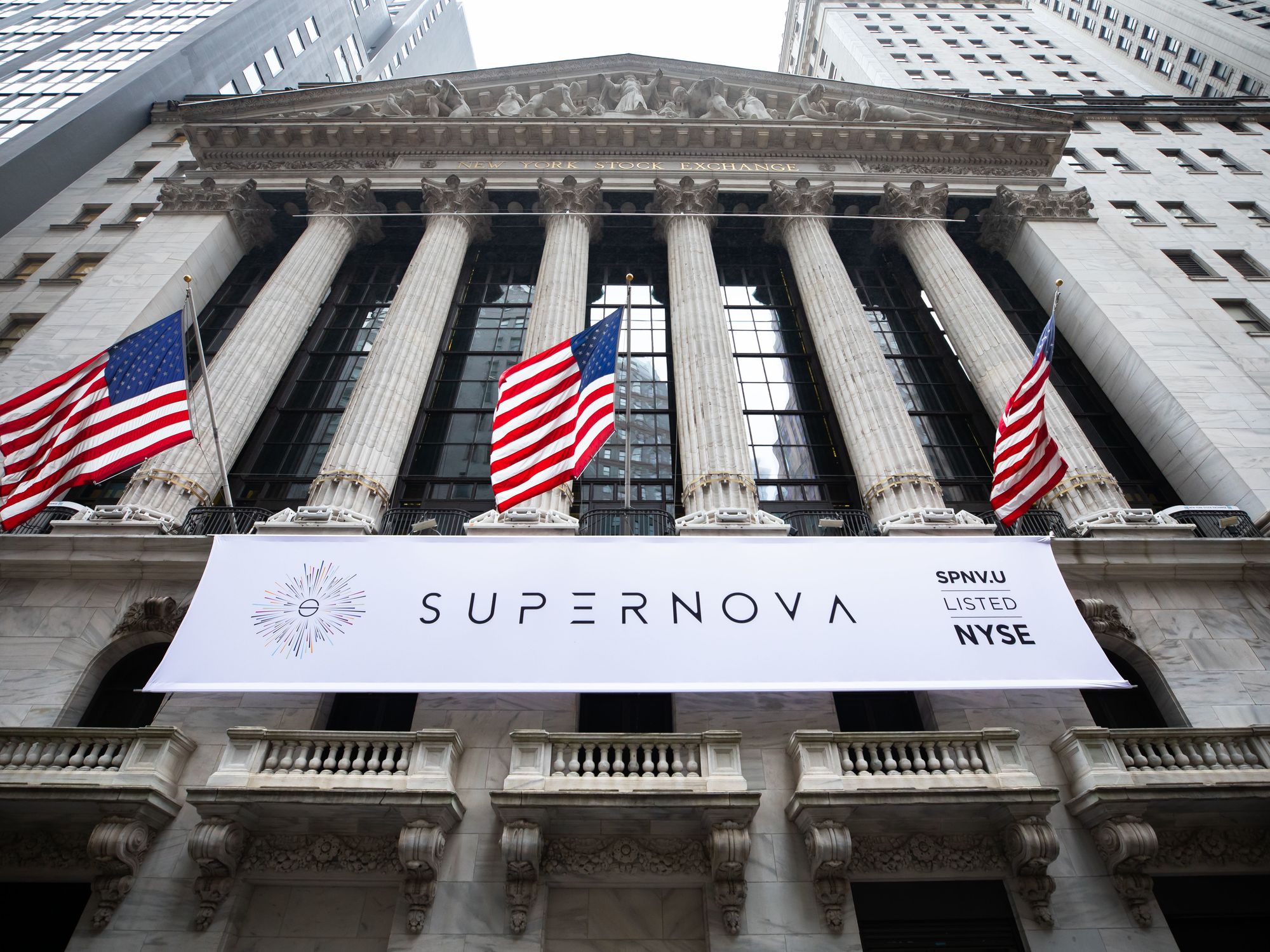Column: Why SPACs Are Today’s Best Option for an IPO
Spencer Rascoff serves as executive chairman of dot.LA. He is an entrepreneur and company leader who co-founded Zillow, Hotwire, dot.LA, Pacaso and Supernova, and who served as Zillow's CEO for a decade. During Spencer's time as CEO, Zillow won dozens of "best places to work" awards as it grew to over 4,500 employees, $3 billion in revenue, and $10 billion in market capitalization. Prior to Zillow, Spencer co-founded and was VP Corporate Development of Hotwire, which was sold to Expedia for $685 million in 2003. Through his startup studio and venture capital firm, 75 & Sunny, Spencer is an active angel investor in over 100 companies and is incubating several more.

I have long been a proponent of going public because I believe it creates stronger, more disciplined companies that deliver greater shareholder value. It's great to see the pendulum in the founder and venture capital community swinging away from the "stay private longer" attitude that dominated tech over the last decade.
That said, the traditional IPO listing path has many shortcomings. I experienced this firsthand in 2011 when we took Zillow public. The cover price on the original S-1 was $12-$14 a share, but we upped it to $14-$16 due to strong demand on the IPO roadshow. We priced it at $20 a share, only to watch the first trade open at $60 that day. (Note: Zillow has since done a 3-for-1 stock split, so divide these numbers by three if you're trying to compare it with today's ~ $100 stock price.)
So on what should have been a day of high-fives and champagne, I couldn't help but feel disappointment that we left a huge amount of money on the table by underpricing our IPO. 🤦 Facepalm.
Our employees and our venture capital owners were penalized by this broken system. And it's not just the Zillow IPO — this problem is systemic; the typical tech IPO trades up by 43% one day later. That's a massive amount of money to leave on the table for an issuer.
Direct listings provide a second path to a public listing, and they typically avoid the underpricing issue of a traditional listing. But they have their own set of shortcomings, including the inability of the company to raise primary capital in the offering.
SPACs — Special Purpose Acquisition Companies — offer a third way, and remedy many of the problems with IPOs, while offering some new benefits, including the ability for a company to provide financial projections at the time of the SPAC IPO, when the private company merges with the public SPAC. In addition, the SPAC model offers a quicker, more certain path to going public. With the launch of Supernova Partners Acquisition Company (yes, our acronym is "SPAC"), my partners and I are creating that path for a company in the broader tech sector.
But going public by merging with a SPAC is just an express route to basecamp. Being a fast-scaling, successful public company is the summit. I know this because I've been up that mountain.
From the point we went public at Zillow, we navigated 16 acquisitions — including that of another public company who was our biggest competitor. We grew our employee base 10-fold in six years. We pulled off a complex business pivot. And most critically, we protected our culture from the volatility of the stock market and kept our people focused on our mission. The internal name for the Zillow IPO in 2011 was "Project Step," because it was just a step along the way. I've seen firsthand that going public is the beginning, not the end.
The transition from being privately held to being publicly traded is like graduating from college and entering the real world and the job market. Welcome to the big time. And for a newly public company, it's a scary world out there, full of potential facepalm moments. The right mentors, directors, and advisors can make a huge difference during those first few years as a public company. And that is yet another benefit of going public through a SPAC: you get the benefit of the experience which the sponsor group provides. In Supernova's case, we have assembled a world-class team with diverse skills available to help whichever company we take public. We are player-coaches who have all excelled on the field before, and are now excited to help shepherd a company and help them avoid facepalm moments of their own.
There are many SPACs (and more every day), but not all are created equal. Some teams are Wall Street-heavy and exist only to take a company public, exploiting a private-to-public valuation arbitrage opportunity; some are led by Silicon Valley founders who will act as advisors for a longer period of time. Very few combine both. With Supernova, my partners and I, along with our board, together create a Swiss Army knife of experience in company building, culture building, marketing, finance, deal-making, product design, tech, capital markets and operations.
We know the journey to IPO and beyond is filled with facepalm crevasses that can be avoided with an expert guide at your side. Our operations and managerial experience, combined with our mentoring and coaching of founders and executives over two decades, will help chart a path toward long-term value. Personally, this is the beginning of a very exciting journey in my career as it combines all of my passions — investing, mentoring and coaching — with my experience as a seasoned CEO, all together with an unparalleled team I'm proud to call partners.
Spencer Rascoff is the co-Chair of Supernova Partners Acquisition Company and the co-founder of dot.LA.
- Founder Questions: When Should I Not Raise Capital? ›
- Founder Questions: As CEO, How Should I Spend My Time? - dot.LA ›
- How and When Do You Hire Your First Salesperson? - dot.LA ›
- How To Lay Off Staff With Compassion - dot.LA ›
- Triller Is Reviewing Offers from 3 SPACs to Go Public - dot.LA ›
- Canoo to Go Public After Shareholders Approve Merger - dot.LA ›
- How CEOs of Public Companies Should Think About Stock Price - dot.LA ›
- What Is a SPAC? - dot.LA ›
- Spencer Rascoff's SPAC Merges with Rigetti to go Public - dot.LA ›
- What Spencer Rascoff Looks for in a Founder - dot.LA ›
- Column: How to Handle Setbacks In Startup Funding - dot.LA ›
Spencer Rascoff serves as executive chairman of dot.LA. He is an entrepreneur and company leader who co-founded Zillow, Hotwire, dot.LA, Pacaso and Supernova, and who served as Zillow's CEO for a decade. During Spencer's time as CEO, Zillow won dozens of "best places to work" awards as it grew to over 4,500 employees, $3 billion in revenue, and $10 billion in market capitalization. Prior to Zillow, Spencer co-founded and was VP Corporate Development of Hotwire, which was sold to Expedia for $685 million in 2003. Through his startup studio and venture capital firm, 75 & Sunny, Spencer is an active angel investor in over 100 companies and is incubating several more.



 Image Source: Perelel
Image Source: Perelel
 Image Source: Valar Atomics
Image Source: Valar Atomics Image Source: Waymo
Image Source: Waymo Image Source: Apple
Image Source: Apple